Yes, especially limited-production models like the Final Edition or ACR variants. Due to low production numbers and rising demand, Vipers are becoming increasingly collectible.
Few cars have captured the raw spirit of American performance like the Dodge Viper. With its monstrous V10 engine, unapologetic styling, and a legacy rooted in motorsports, the Viper is more than just a car—it’s a symbol of unfiltered automotive passion. From its concept unveiling in 1989 to its production finale in 2017, the Dodge Viper redefined what it meant to be an American supercar.
This comprehensive guide dives deep into Dodge Viper history, exploring every generation, Viper specs, performance benchmarks, design evolutions, and what makes each Viper model stand out. Whether you're researching before buying, comparing models, or just geeking out on Viper performance, this article is built to dominate the search rankings and serve as your go-to Dodge Viper buying guide.
A Brief History of the Dodge Viper
The Dodge Viper was born in the late '80s as a no-frills, high-performance muscle car that could go toe-to-toe with European exotics. Developed under Chrysler and later the SRT (Street & Racing Technology) brand, the Viper emphasized simplicity: brutal power, rear-wheel drive, manual-only transmission, and minimal driver aids.
The Viper was never about convenience. It was about dominating the road and track.
Generation-by-Generation Breakdown
Gen 1 (1992–1995) – The RT/10 Era
The Dodge Viper RT/10 marked the debut of this now-iconic beast. Launched in 1992, it featured an 8.0L Viper V10 engine that delivered 400 horsepower and 465 lb-ft of torque.
- 0–60 mph: 4.6 seconds
- Top Speed: 165 mph
- Quarter Mile: 12.9 seconds
- Transmission: 6-speed manual
- Notable Features: No airbags, no windows, no roof—just raw power
The Viper Gen 1 was a roadster that looked like a concept car come to life. It had a side-exit exhaust and was intentionally stripped down to maximize weight savings. Think AC Cobra meets modern brute force.
What does RT/10 mean on a Viper? RT stands for "Road and Track", and 10 references its V10 powerplant.
Gen 2 (1996–2002) – Refinement and the GTS
The second generation brought the Dodge Viper GTS, a more civilized coupe with creature comforts like actual windows and an airbag. Horsepower increased to 450.
- Dodge Viper GTS: 8.0L V10, 450 hp
- 0–60 mph: 4.0 seconds
- Top Speed: 180+ mph
- Notable Model: 1996 Dodge Viper GTS – First with dual airbags and a fixed roof
In 1999, the first Viper ACR (American Club Racer) was introduced, focusing purely on performance. Stripped of unnecessary weight, it added racing suspension, special BBS wheels, and stiffer shocks—making it a favorite among track enthusiasts.
Gen 3 (2003–2006) – SRT-10 Convertible
Now branded under the SRT moniker, the Dodge Viper SRT-10 returned to a roadster format. Displacement grew to 8.3L, and horsepower jumped to 500.
- Engine: 8.3L V10, 500 hp
- Torque: 525 lb-ft
- Chassis: All-new, stiffer structure
- 0–60 mph: 3.9 seconds
- Interior: Slightly more refined, but still minimalistic
The Gen 3 Viper SRT-10 was easier to drive at the limit compared to earlier models but remained a beast on the street. It also marked a transitional era—balancing Viper's rawness with modern expectations.
Gen 4 (2008–2010) – Peak V10 Performance
In Gen 4, the Viper evolved once again, receiving a revamped 8.4L V10 engine producing 600 horsepower and 560 lb-ft of torque.
- 0–60 mph: 3.5 seconds
- Top Speed: 202 mph
- Viper ACR (2008): Built for the Nürburgring
The Viper ACR from this generation set a Nürburgring record in 2008, running the course in just 7:22.1—making it one of the fastest street-legal cars around the famed German track.
Gen 5 (2013–2017) – The Final Evolution
After a brief hiatus, the Viper Gen 5 returned in 2013 under the SRT brand before being folded back into Dodge. It retained the 8.4L V10 but increased output to 645 horsepower.
- Viper ACR (2016): 645 hp, massive rear wing, carbon ceramic brakes
- 0–60 mph: 3.3 seconds
- Top Speed: 206 mph
- Nürburgring Time: 7:01.3 (unofficial)
What does ACR stand for in Viper? ACR = American Club Racer. It's the ultimate track-focused Viper variant.
The last Dodge Viper rolled off the production line in 2017. There is no direct replacement to date, making the Viper final edition an immediate collectible and a potential good investment.

Performance Highlights Across All Generations
| Generation | Engine | Horsepower | 0–60 mph | Top Speed |
|---|---|---|---|---|
| Gen 1 | 8.0L V10 | 400 hp | 4.6 sec | 165 mph |
| Gen 2 | 8.0L V10 | 450 hp | 4.0 sec | 180+ mph |
| Gen 3 | 8.3L V10 | 500 hp | 3.9 sec | 190 mph |
| Gen 4 | 8.4L V10 | 600 hp | 3.5 sec | 202 mph |
| Gen 5 | 8.4L V10 | 645 hp | 3.3 sec | 206 mph |
These figures helped define the Viper legacy as one of the most brutal performance cars ever built.
Design Evolution and Styling
From its muscular hood to its snake-inspired badge, the Dodge Viper design evolved but always remained instantly recognizable.
- Viper Gen 1 & 2: Curvy and retro-futuristic
- Viper Gen 3 & 4: Sharper edges, more aggressive front fascia
- Viper Gen 5: Race-car-like aerodynamics, bold colors, functional downforce
Inside, the Viper interior matured with each generation, but always stayed true to its minimalist roots. Leather-wrapped surfaces and touchscreen infotainment arrived in later years, but the focus always remained on the Viper chassis, brakes, and suspension—not luxury.
Dodge Viper Racing Pedigree
The Dodge Viper GTS-R was a dominant force in GT racing throughout the late '90s and early 2000s, securing class wins at Le Mans, Sebring, and Daytona.
- Viper Le Mans wins: GTS class victories in 1998, 1999, 2000
- Viper motorsport legacy: Built by Oreca, tuned for international endurance races
The track-focused Viper ACR would later continue this legacy by setting multiple lap records, including at Laguna Seca, Road Atlanta, and the Nürburgring.

Dodge Viper Ownership, Insurance, and Maintenance
So, is a Dodge Viper a good investment?
Yes—especially low-mileage final edition Vipers, ACR models, and Gen 2 GTS coupes.
But keep in mind:
- Insurance costs are high due to the car’s power and rarity
- Maintenance tips: Watch for clutch wear, cooling system checks, and tire condition (Vipers eat tires)
- Common problems: Interior rattles, oil leaks (Gen 1), and lack of modern safety features
Still, Dodge Viper reliability is better than most supercars, and many used Dodge Viper for sale listings offer well-maintained vehicles under 50k miles.
What Makes the Dodge Viper Unique?
- Manual-only transmission across all years
- Massive Viper engine displacement
- One of the last analog American muscle cars
- No driver assists (especially early gens)
- Hand-built in Detroit and Conner Avenue Assembly
What replaced the Dodge Viper? Truthfully, nothing. The Viper was one of a kind.
Thinking About Buying a Viper?
If you’re serious about ownership, here’s your Dodge Viper buying guide:
- Best year Dodge Viper: 1996 GTS for purity, 2016 ACR for performance
- Most reliable Dodge Viper generation: Gen 3 and early Gen 5
- Which Viper to buy? Weekend driver: Gen 3. Collector’s piece: ACR or Final Edition. Daily usability: Later Gen 5.
- Viper vs Corvette: Viper is rarer, more raw. Corvette is more refined.
- Viper vs Ferrari / Porsche: Viper wins on raw emotion and value
For extended peace of mind, don’t forget to protect your investment with a vehicle service contract. Noble Quote offers premium vehicle repair protection for every driver, including exotic and collectible cars.
Visit the Noble Quote Learning Center for more expert insights.
Dodge Viper FAQs: Expert Answers to the Most Searched Questions About Every Generation
Is the Dodge Viper a good investment?
How much does it cost to insure a Dodge Viper?
Insurance costs vary by location, driving history, and model year, but expect higher premiums due to the car's performance classification and rarity. Rates can range from $1,500 to over $3,000 annually.
Why was the Dodge Viper discontinued?
The Viper was discontinued in 2017 due to stricter safety regulations and declining sales. Its lack of electronic stability control in earlier years and high manufacturing costs contributed to the decision.
What is a Dodge Viper known for?
The Dodge Viper is best known for its powerful V10 engine, manual-only transmission, and raw, track-ready performance. It stands out as one of the most iconic American supercars ever built.
How many Dodge Viper generations are there?
There are five Dodge Viper generations: Gen 1 (1992–1995), Gen 2 (1996–2002), Gen 3 (2003–2006), Gen 4 (2008–2010), and Gen 5 (2013–2017). Each introduced major upgrades in power, design, and handling.
What engine does the Dodge Viper use?
All Dodge Vipers are equipped with a naturally aspirated V10 engine, ranging from 8.0L in Gen 1 to 8.4L in Gen 5. Horsepower increased from 400 hp to 645 hp over the years.
Which Dodge Viper generation is the most reliable?
Gen 3 (2003–2006) and Gen 5 (2013–2017) are widely regarded as the most reliable due to better build quality and more refined engineering, while still delivering extreme performance.
What does ACR stand for in the Dodge Viper lineup?
ACR stands for American Club Racer. It designates the most track-focused version of the Viper, with aerodynamic upgrades, race suspension, and reduced weight for lap time dominance.
How fast is the Dodge Viper ACR?
The 2016 Dodge Viper ACR can go from 0 to 60 mph in about 3.3 seconds and has set lap records at numerous tracks. Its top speed is limited to around 177 mph due to high-downforce aero.
What is the best year for the Dodge Viper?
Many enthusiasts consider the 1996 GTS and 2016 ACR among the best years. The GTS introduced a hardtop and more comfort, while the ACR was the most capable performance Viper ever made.
Suggestions for you
Read MoreLet’s work together
Every week we showcase three charitable organizations that our donations are sent to. Our clients are able to choose which of these three will receive their gift when they add coverage to their vehicle...


 New Jersey Car Insurance Laws 2025–2026: Your Essential Guide to What’s Changed & What’s Next
New Jersey Car Insurance Laws 2025–2026: Your Essential Guide to What’s Changed & What’s Next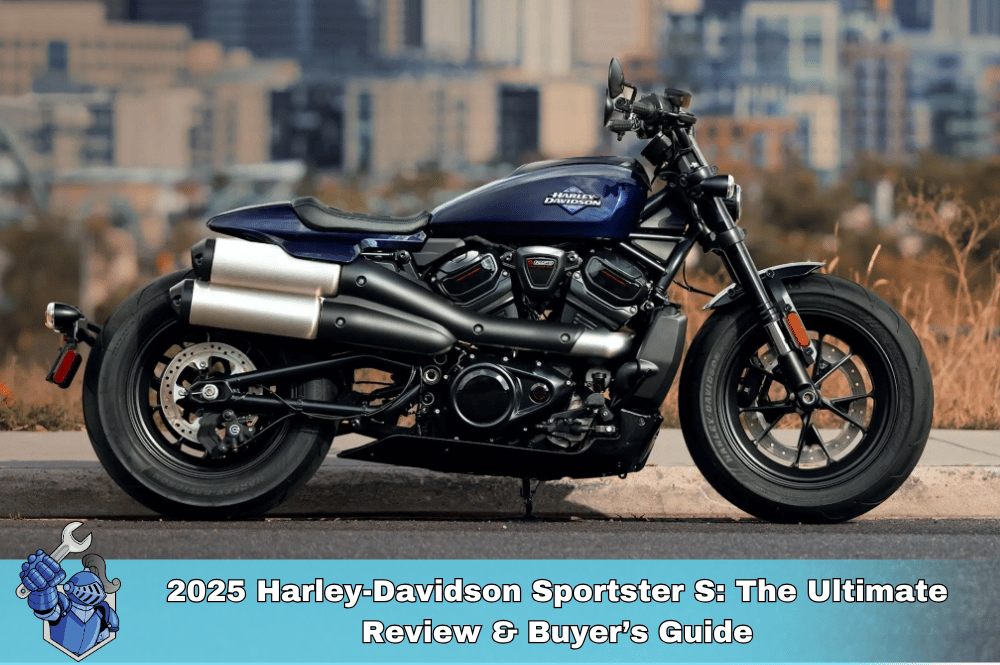 2025 Harley-Davidson Sportster S: The Ultimate Review & Buyer’s Guide
2025 Harley-Davidson Sportster S: The Ultimate Review & Buyer’s Guide Drive Smarter: Unlock Vehicle Protection with 0% APR Service Contract Payments
Drive Smarter: Unlock Vehicle Protection with 0% APR Service Contract Payments Pep Boys: Your Complete Guide to Auto Parts, Service & Repair (2025 Edition)
Pep Boys: Your Complete Guide to Auto Parts, Service & Repair (2025 Edition) 2025 Cadillac Lyriq Review: The Ultimate Luxury Electric SUV?
2025 Cadillac Lyriq Review: The Ultimate Luxury Electric SUV? Blown Head Gasket: The $2,500+ Repair Nightmare That Catches Car Owners Off Guard – Learn How to Prepare
Blown Head Gasket: The $2,500+ Repair Nightmare That Catches Car Owners Off Guard – Learn How to Prepare Barbie's Dream Car: The Ultimate EV Conversion? (And Why Even Fantasy Needs a Real Warranty)
Barbie's Dream Car: The Ultimate EV Conversion? (And Why Even Fantasy Needs a Real Warranty) 2025 BMW X7 vs. Mercedes-Benz GLS: Which Luxury SUV Reigns Supreme?
2025 BMW X7 vs. Mercedes-Benz GLS: Which Luxury SUV Reigns Supreme? The Ultimate Guide to Motorcycle Extended Warranties: Is It Worth It for Your Ride?
The Ultimate Guide to Motorcycle Extended Warranties: Is It Worth It for Your Ride? Unlock Better Opportunities: Your Guide to Understanding and Improving Your Credit Score
Unlock Better Opportunities: Your Guide to Understanding and Improving Your Credit Score Safe Kids: Your Comprehensive Guide to Child Car Seat Installation Tips and Guidelines
Safe Kids: Your Comprehensive Guide to Child Car Seat Installation Tips and Guidelines Chevy Colorado: Unpacking the Features and the Real Cost of Ownership
Chevy Colorado: Unpacking the Features and the Real Cost of Ownership Don’t Let Tariffs Hike Your Bills: The Smart Way an Extended Warranty Saves You on Car Repairs
Don’t Let Tariffs Hike Your Bills: The Smart Way an Extended Warranty Saves You on Car Repairs Drive Smart, Save Smarter: Your Guide to Budgeting for Car Care
Drive Smart, Save Smarter: Your Guide to Budgeting for Car Care Tech Troubles Ahead? The Rising Costs of Modern Vehicle Repairs
Tech Troubles Ahead? The Rising Costs of Modern Vehicle Repairs The Downtime Trap: How Car Repairs Can Cost You More Than Just the Bill
The Downtime Trap: How Car Repairs Can Cost You More Than Just the Bill DIY Danger? The Financial Risks of Handling Car Repairs Yourself
DIY Danger? The Financial Risks of Handling Car Repairs Yourself Smart Buyer’s Guide: Ford F-250 Review and Long-Term Ownership Costs (2022–2024)
Smart Buyer’s Guide: Ford F-250 Review and Long-Term Ownership Costs (2022–2024) Depreciation Demystified: Planning for Your Car’s Future Value
Depreciation Demystified: Planning for Your Car’s Future Value New vs. Used: A Financial Showdown for Your Next Vehicle
New vs. Used: A Financial Showdown for Your Next Vehicle Blockchain Basics: The Technology Behind Cryptocurrencies
Blockchain Basics: The Technology Behind Cryptocurrencies Beyond Self-Driving: OpenAI and the Next Generation of Automotive Intelligence
Beyond Self-Driving: OpenAI and the Next Generation of Automotive Intelligence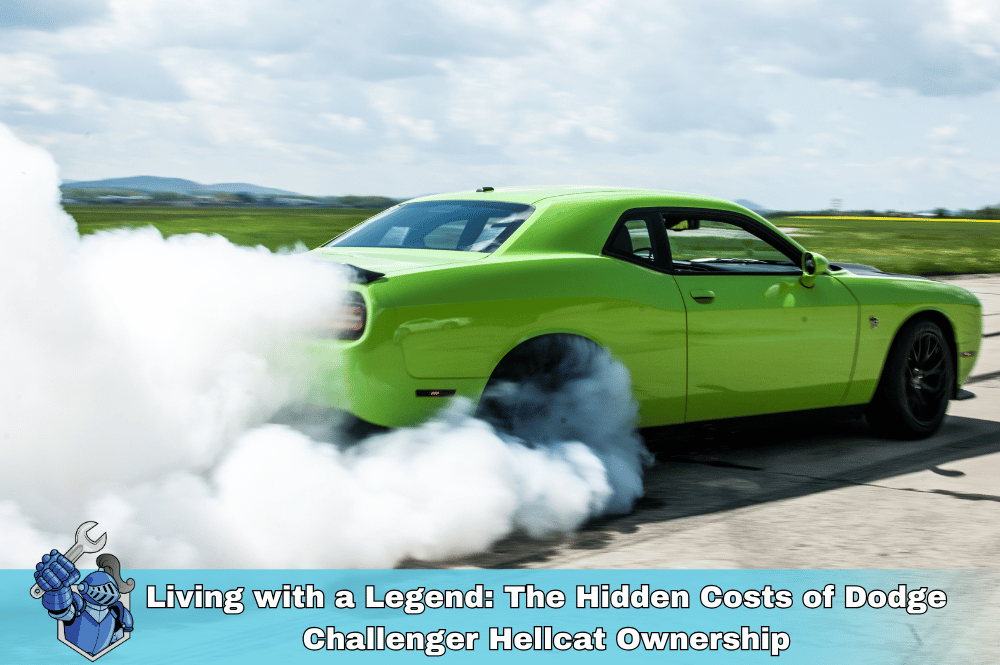 Living with a Legend: The Hidden Costs of Dodge Challenger Hellcat Ownership
Living with a Legend: The Hidden Costs of Dodge Challenger Hellcat Ownership The Crypto Long Game: Proven Strategies for Building Generational Wealth
The Crypto Long Game: Proven Strategies for Building Generational Wealth Family First, Finances Second? The Real Cost of Owning a Toyota Highlander
Family First, Finances Second? The Real Cost of Owning a Toyota Highlander Understanding Car Leasing: A Complete Guide for First-Timers
Understanding Car Leasing: A Complete Guide for First-Timers Drive Away Richer? Credit Card Secrets for Smart Car Buying
Drive Away Richer? Credit Card Secrets for Smart Car Buying The EV Territory Wars: US Automakers Fight for Survival
The EV Territory Wars: US Automakers Fight for Survival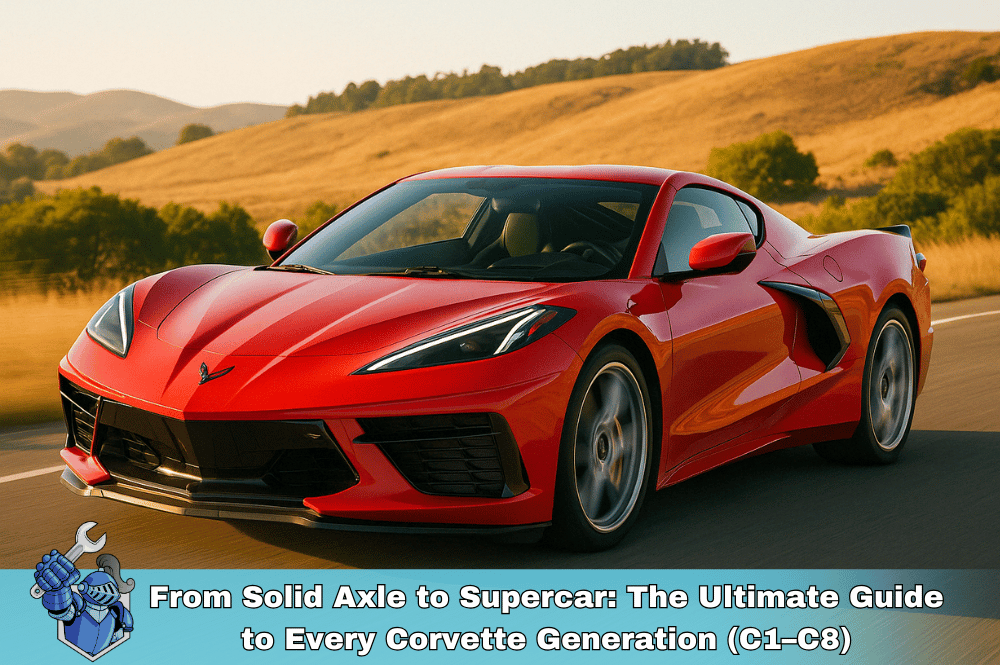 From Solid Axle to Supercar: The Ultimate Guide to Every Corvette Generation (C1–C8)
From Solid Axle to Supercar: The Ultimate Guide to Every Corvette Generation (C1–C8) Hello, Robot Neighbor: The Dawn of Everyday AI and Its Impact
Hello, Robot Neighbor: The Dawn of Everyday AI and Its Impact Beyond the Movie: The Gritty Truth of Ford vs. Ferrari
Beyond the Movie: The Gritty Truth of Ford vs. Ferrari Slash Your Car Insurance Bills: Expert Tips You Need Now
Slash Your Car Insurance Bills: Expert Tips You Need Now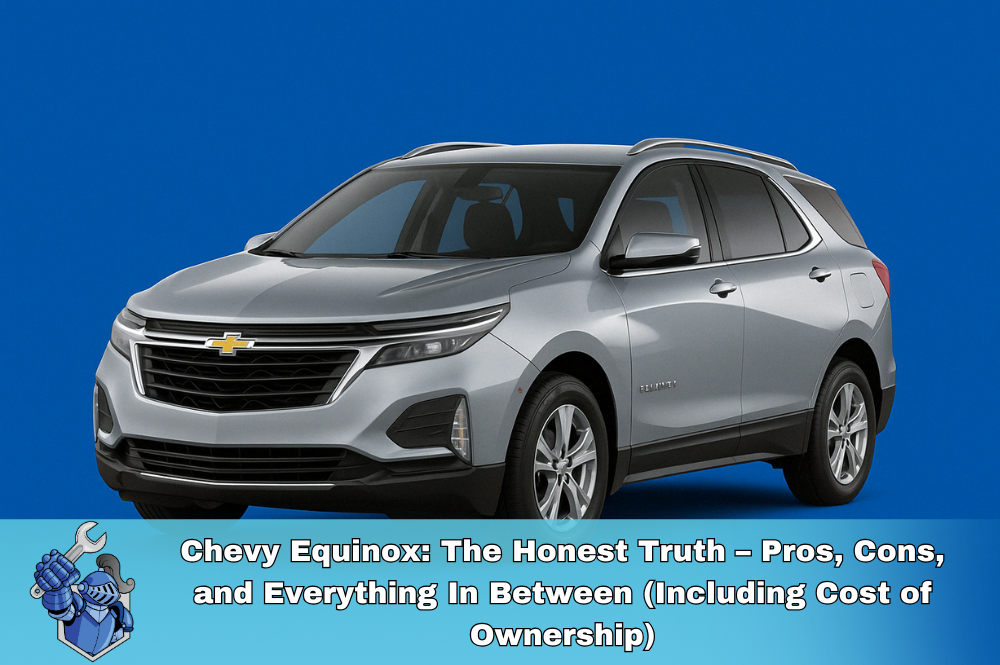 Chevy Equinox: The Honest Truth – Pros, Cons, and Everything In Between (Including Cost of Ownership)
Chevy Equinox: The Honest Truth – Pros, Cons, and Everything In Between (Including Cost of Ownership) Decoding Auto Insurance: Your Easy-to-Understand Guide
Decoding Auto Insurance: Your Easy-to-Understand Guide Pessada Holdings: BBB A+ Rated Excellence
Pessada Holdings: BBB A+ Rated Excellence Save More, Stress Less: Family Budgeting Tips That Work
Save More, Stress Less: Family Budgeting Tips That Work Slate’s Electric Entry: A Deep Dive into the New Automotive Truck
Slate’s Electric Entry: A Deep Dive into the New Automotive Truck Affordability Crisis: How Rising Costs are Putting the Brakes on Car Sales
Affordability Crisis: How Rising Costs are Putting the Brakes on Car Sales The Extended Warranty Pitch: What Dealers Don't Always Tell You
The Extended Warranty Pitch: What Dealers Don't Always Tell You Unlock Your Dream Ride: The Ultimate Guide to Scoring a New Car Deal
Unlock Your Dream Ride: The Ultimate Guide to Scoring a New Car Deal The Ultimate Guide to Scoring a Great Deal on a Used Car
The Ultimate Guide to Scoring a Great Deal on a Used Car Used Car Paperwork Checklist: Everything You Need to Buy Smart
Used Car Paperwork Checklist: Everything You Need to Buy Smart Decoding “As-Is”: Your Essential Guide to Buying a Used Car
Decoding “As-Is”: Your Essential Guide to Buying a Used Car Allstate Auto Insurance: A Comprehensive Review
Allstate Auto Insurance: A Comprehensive Review Cars.com: Your All-in-One Guide to Buying, Selling, and Owning Cars
Cars.com: Your All-in-One Guide to Buying, Selling, and Owning Cars Is Geico the Right Choice? An In-Depth Auto Insurance Review
Is Geico the Right Choice? An In-Depth Auto Insurance Review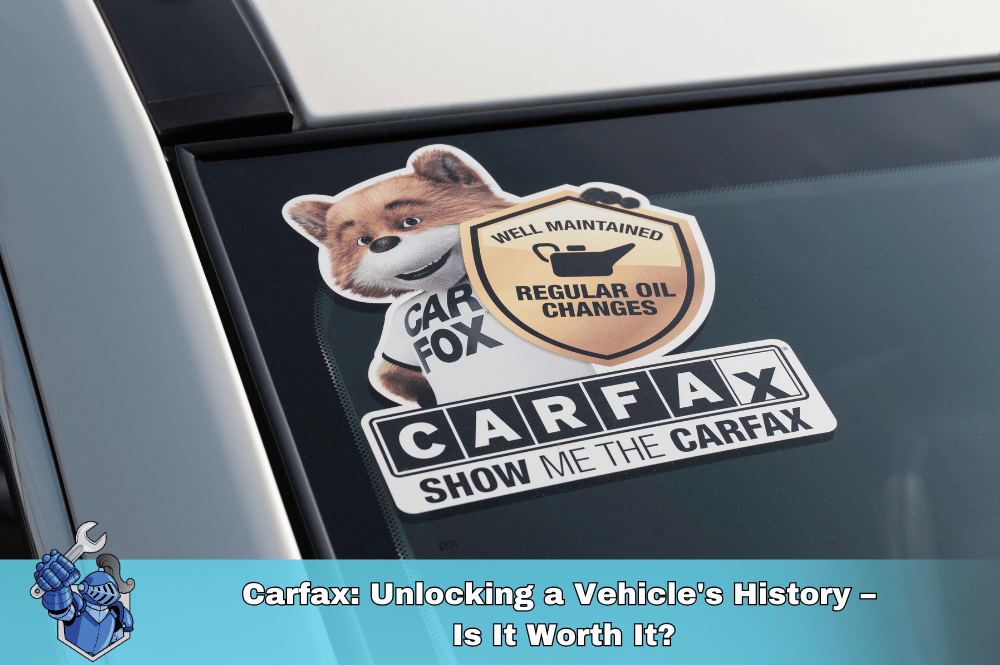 Carfax: Unlocking a Vehicle's History – Is It Worth It?
Carfax: Unlocking a Vehicle's History – Is It Worth It? Progressive Auto Insurance: A Complete Review of Coverage, Costs, and Customer Experience
Progressive Auto Insurance: A Complete Review of Coverage, Costs, and Customer Experience The Trusted Choice: A Comprehensive Look at NAPA AutoCare Center Services
The Trusted Choice: A Comprehensive Look at NAPA AutoCare Center Services Mazda Miata: Unpacking the Thrills and the Real Cost of Ownership
Mazda Miata: Unpacking the Thrills and the Real Cost of Ownership Online Car Shopping vs. Dealerships: Which Road Should You Take?
Online Car Shopping vs. Dealerships: Which Road Should You Take? The Hidden Risks of Buy Here Pay Here Car Dealerships
The Hidden Risks of Buy Here Pay Here Car Dealerships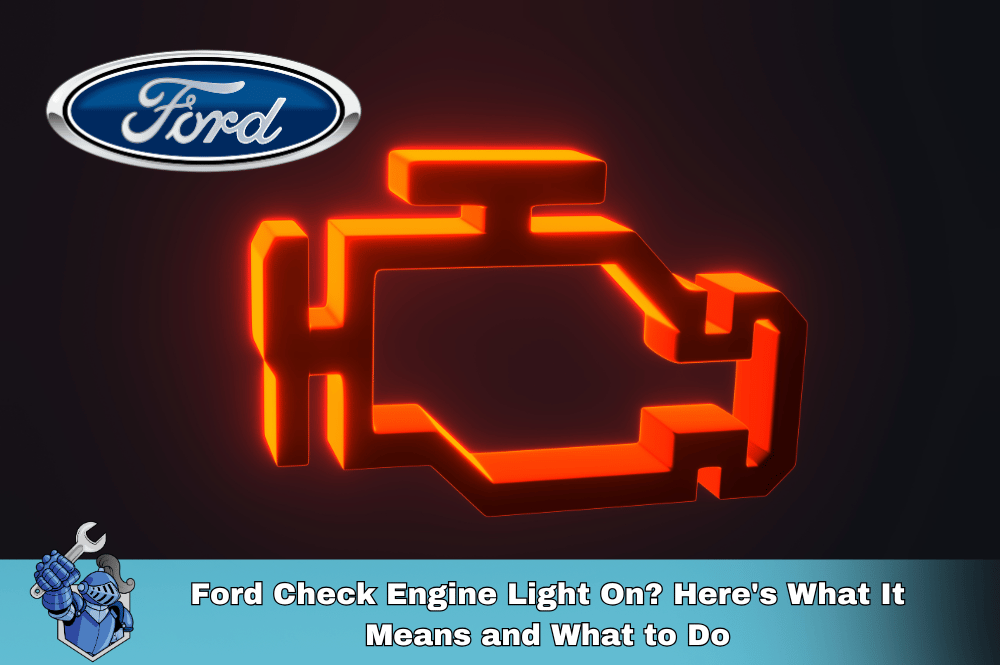 Ford Check Engine Light On? Here's What It Means and What to Do
Ford Check Engine Light On? Here's What It Means and What to Do USAA Auto Insurance Review: The Complete In’s and Out’s (2025 Edition)
USAA Auto Insurance Review: The Complete In’s and Out’s (2025 Edition) The Basics of Car Insurance Deductibles and How They Work
The Basics of Car Insurance Deductibles and How They Work Is an AARP Membership Worth It for Drivers?
Is an AARP Membership Worth It for Drivers? Navigating Bank of America Auto Loans: What You Need to Know
Navigating Bank of America Auto Loans: What You Need to Know 5 Steps to a Higher Credit Score: Your Guide to Better Auto Loan Rates
5 Steps to a Higher Credit Score: Your Guide to Better Auto Loan Rates The General Auto Insurance: What You Need to Know
The General Auto Insurance: What You Need to Know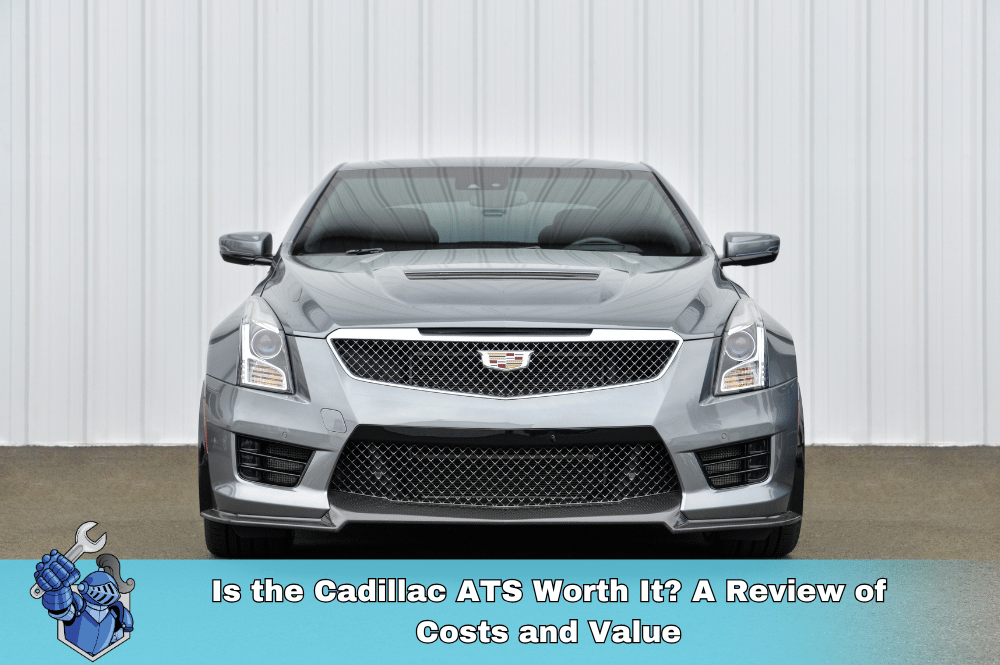 Is the Cadillac ATS Worth It? A Review of Costs and Value
Is the Cadillac ATS Worth It? A Review of Costs and Value Capital One Auto Loans: Your Complete Guide to Financing Your Next Vehicle
Capital One Auto Loans: Your Complete Guide to Financing Your Next Vehicle The Ultimate Guide to Selling Your Car
The Ultimate Guide to Selling Your Car Nationwide Auto Insurance: 10 Essential Things to Know Before You Buy
Nationwide Auto Insurance: 10 Essential Things to Know Before You Buy Lost Keys? Noble Quote Has You Covered (and More!)
Lost Keys? Noble Quote Has You Covered (and More!) The Digital Garage for Your Dollars: Navigating the World of Trading Apps
The Digital Garage for Your Dollars: Navigating the World of Trading Apps The True Cost of Owning a G80 BMW M3: Beyond the Sticker Price
The True Cost of Owning a G80 BMW M3: Beyond the Sticker Price O'Reilly Auto Parts: Your Comprehensive Guide to Services, Products, and More
O'Reilly Auto Parts: Your Comprehensive Guide to Services, Products, and More Land Cruiser 2025: Unleashed & Uncosted!
Land Cruiser 2025: Unleashed & Uncosted! Noble Quote vs. Amber: Which Automotive Service Offers the Best Value?
Noble Quote vs. Amber: Which Automotive Service Offers the Best Value? Unlock Lower Rates: Your Guide to Travelers Auto Insurance Discounts
Unlock Lower Rates: Your Guide to Travelers Auto Insurance Discounts Porsche Macan: The REAL Cost of Ownership (2015–2024 Review)
Porsche Macan: The REAL Cost of Ownership (2015–2024 Review) Land Rover Evoque Review (2012–2024): True Cost of Ownership Revealed
Land Rover Evoque Review (2012–2024): True Cost of Ownership Revealed Your Car as an NFT? The Future of Automotive Ownership on Ethereum
Your Car as an NFT? The Future of Automotive Ownership on Ethereum Unlock Cheaper Rates: Your Ultimate Guide to State Farm Auto Insurance Discounts
Unlock Cheaper Rates: Your Ultimate Guide to State Farm Auto Insurance Discounts Online Used Car Shopping: What You NEED to Know Before You Buy
Online Used Car Shopping: What You NEED to Know Before You Buy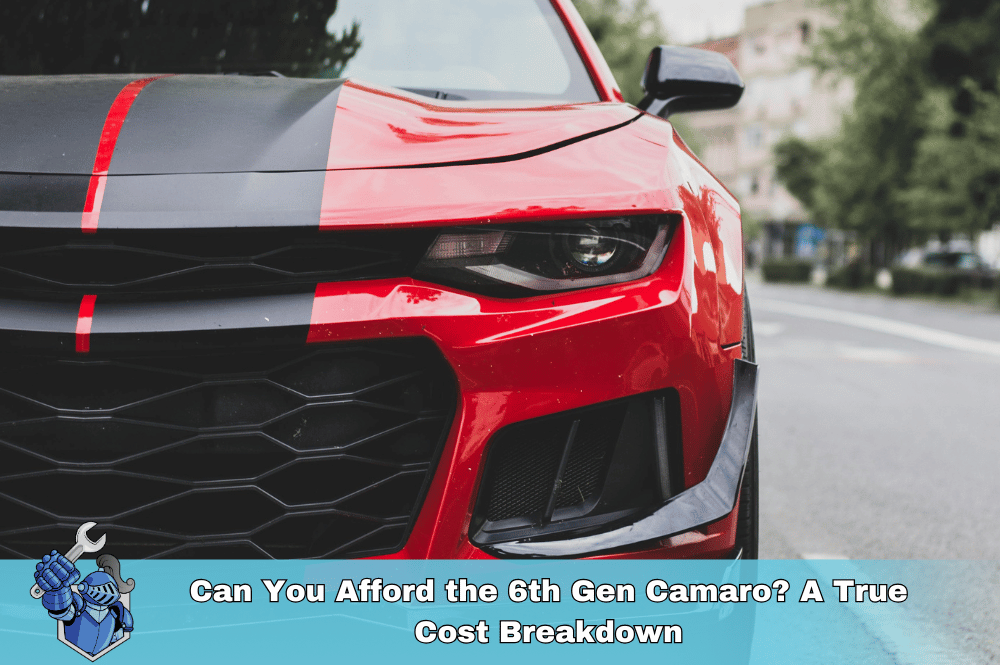 Can You Afford the 6th Gen Camaro? A True Cost Breakdown
Can You Afford the 6th Gen Camaro? A True Cost Breakdown The 7 Hidden Costs of Skipping Your Extended Car Warranty
The 7 Hidden Costs of Skipping Your Extended Car Warranty AutoZone: Your DIY Partner or a Pro's Pit Stop? A Comprehensive Review
AutoZone: Your DIY Partner or a Pro's Pit Stop? A Comprehensive Review Reborn Rugged: Why the Ineos Grenadier is More Than Just an SUV
Reborn Rugged: Why the Ineos Grenadier is More Than Just an SUV Factors Affecting Your Car Insurance Rates: The Ultimate Guide to Understanding Costs
Factors Affecting Your Car Insurance Rates: The Ultimate Guide to Understanding Costs How to Maximize Your Car Trade-In Value: The Ultimate Guide
How to Maximize Your Car Trade-In Value: The Ultimate Guide The Importance of Wheel Alignment and Balancing: Smooth Driving and Tire Longevity
The Importance of Wheel Alignment and Balancing: Smooth Driving and Tire Longevity BYD Cars 2025: Your Ultimate Guide to the Full Lineup & Latest Innovations
BYD Cars 2025: Your Ultimate Guide to the Full Lineup & Latest Innovations Don't Miss Out: How to Buy Crypto Before the Next FOMO Wave (2025 Guide)
Don't Miss Out: How to Buy Crypto Before the Next FOMO Wave (2025 Guide) Farmers Auto Insurance: Your Ultimate 2025 Guide to Coverage, Rates & Savings
Farmers Auto Insurance: Your Ultimate 2025 Guide to Coverage, Rates & Savings Brake Pads: The Science of Stopping (How They're Made, What They Do, & Signs of Wear)
Brake Pads: The Science of Stopping (How They're Made, What They Do, & Signs of Wear) Spark Plugs: The Tiny Titans That Ignite Your Engine
Spark Plugs: The Tiny Titans That Ignite Your Engine The Ultimate Showdown: Car Broker vs. DIY Car Buying – Which Path Saves You More?
The Ultimate Showdown: Car Broker vs. DIY Car Buying – Which Path Saves You More? Kelley Blue Book Instant Cash Offer: Your Ultimate Guide to Getting Top Dollar for Your Car
Kelley Blue Book Instant Cash Offer: Your Ultimate Guide to Getting Top Dollar for Your Car Oxygen Sensors: The 'Eyes' of Your Engine (Their Role, What Goes Wrong, & Why They Matter)
Oxygen Sensors: The 'Eyes' of Your Engine (Their Role, What Goes Wrong, & Why They Matter) Carvana vs. Traditional Dealerships: The Ultimate Showdown for Your Next Car Purchase
Carvana vs. Traditional Dealerships: The Ultimate Showdown for Your Next Car Purchase Full Tort vs. Limited Tort Auto Insurance: The Ultimate Guide to Protecting Your Rights & Payout
Full Tort vs. Limited Tort Auto Insurance: The Ultimate Guide to Protecting Your Rights & Payout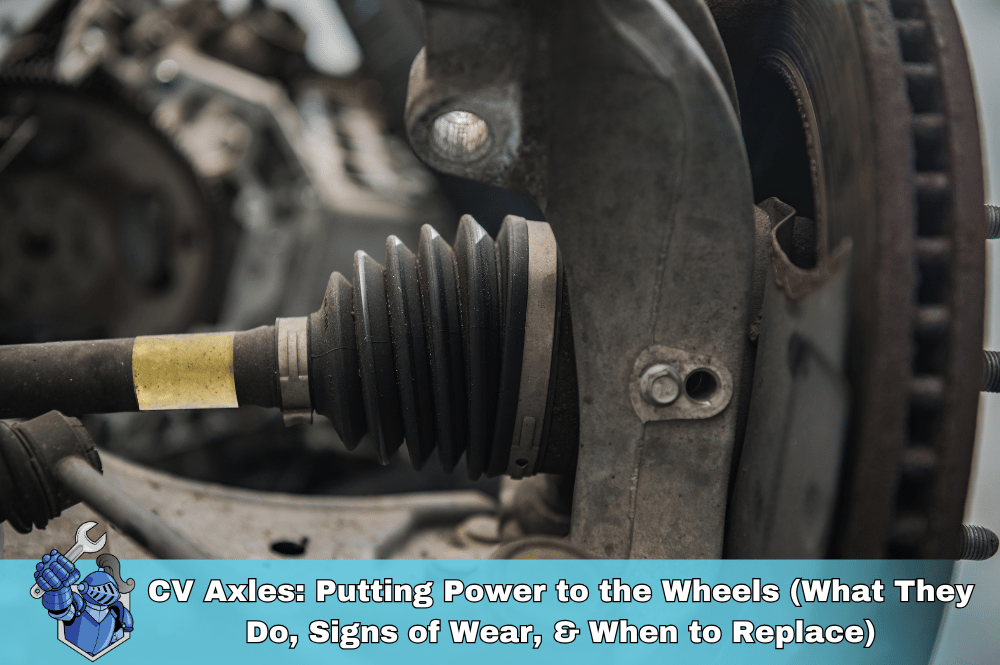 CV Axles: Putting Power to the Wheels (What They Do, Signs of Wear, & When to Replace)
CV Axles: Putting Power to the Wheels (What They Do, Signs of Wear, & When to Replace) 10 Essential Car Prep Tips for Your Family’s Epic Summer Road Trips (2025 Edition)
10 Essential Car Prep Tips for Your Family’s Epic Summer Road Trips (2025 Edition) DriveTime Review 2024/2025: Your Complete A–Z Guide to Buying a Car There
DriveTime Review 2024/2025: Your Complete A–Z Guide to Buying a Car There Rideshare Riches: How Much Can YOU Really Earn Driving for Uber & Lyft in 2025?
Rideshare Riches: How Much Can YOU Really Earn Driving for Uber & Lyft in 2025? The Car Computer (ECM/ECU): The Brain of Your Vehicle (Its Functions, Troubleshooting, & Updates)
The Car Computer (ECM/ECU): The Brain of Your Vehicle (Its Functions, Troubleshooting, & Updates) The Ultimate Truck/SUV Beach Driving Guide: Prep, Safety, & Post-Sand Care
The Ultimate Truck/SUV Beach Driving Guide: Prep, Safety, & Post-Sand Care The Mass Airflow Sensor (MAF): Engine's Air Traffic Controller (Function, Symptoms of Failure, & Cleaning)
The Mass Airflow Sensor (MAF): Engine's Air Traffic Controller (Function, Symptoms of Failure, & Cleaning)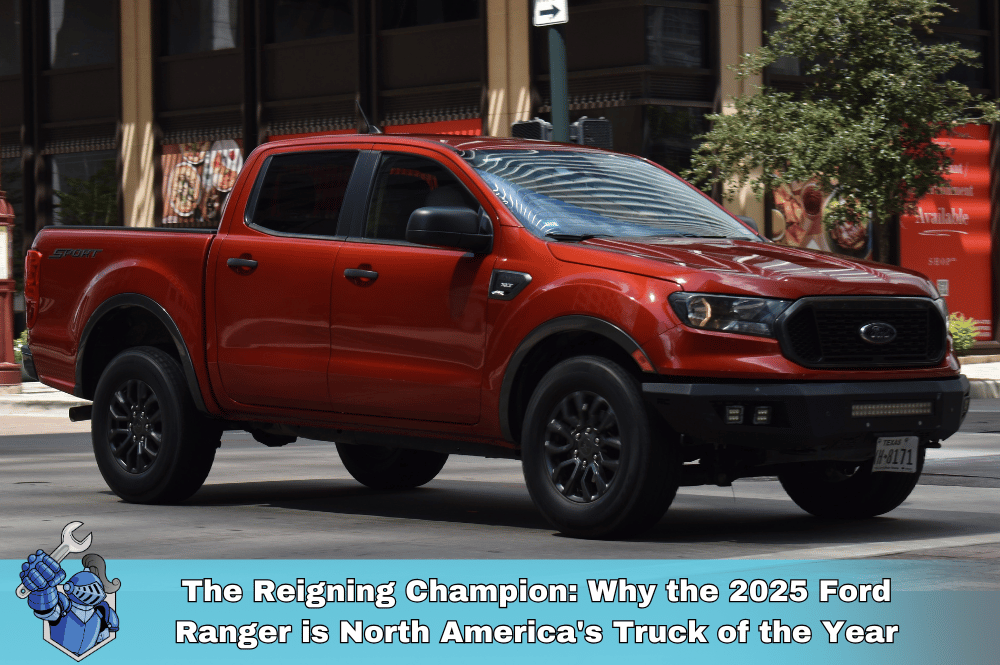 The Reigning Champion: Why the 2025 Ford Ranger is North America's Truck of the Year
The Reigning Champion: Why the 2025 Ford Ranger is North America's Truck of the Year Car Coolant Flush: The Ultimate Guide to a Healthy Engine & Extended Vehicle Life
Car Coolant Flush: The Ultimate Guide to a Healthy Engine & Extended Vehicle Life Serpentine Belt: Powering Your Car's Accessories (Its Job, Signs of Wear, & Replacement)
Serpentine Belt: Powering Your Car's Accessories (Its Job, Signs of Wear, & Replacement) BMW M2: The Pure Driving Machine Reborn?
BMW M2: The Pure Driving Machine Reborn? The Ultimate Protection Plan: How Life Insurance Drives Your Family’s Future
The Ultimate Protection Plan: How Life Insurance Drives Your Family’s Future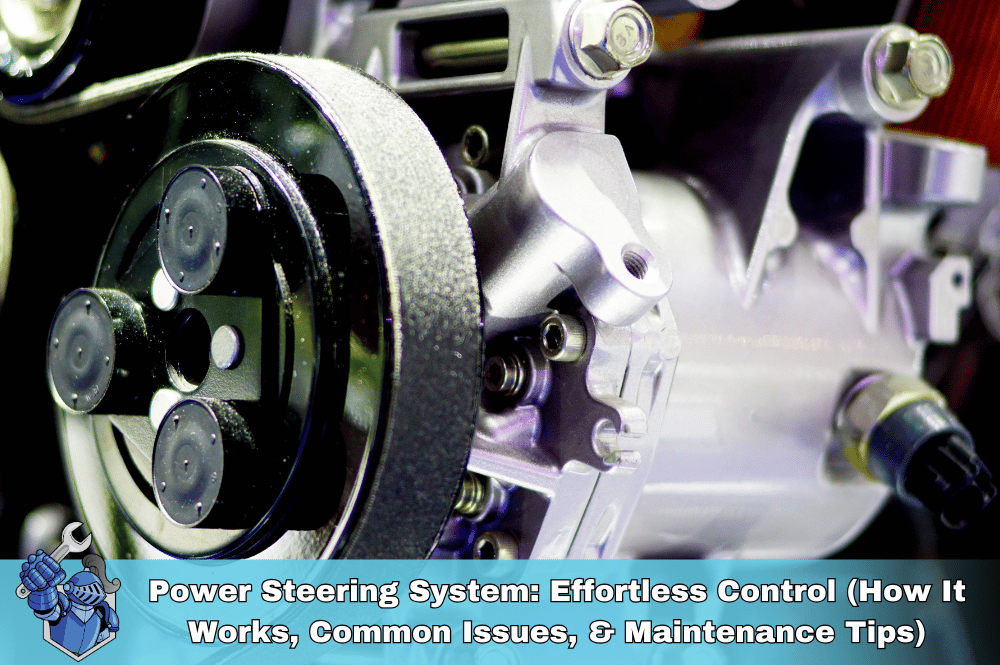 Power Steering System: Effortless Control (How It Works, Common Issues, & Maintenance Tips)
Power Steering System: Effortless Control (How It Works, Common Issues, & Maintenance Tips) End-of-Month Car Deals: Myth or Money-Saver?
End-of-Month Car Deals: Myth or Money-Saver? NobleQuote.com Presents: American National Auto Insurance – Your Complete Guide
NobleQuote.com Presents: American National Auto Insurance – Your Complete Guide Edmunds.com: Your Ultimate Guide to Smarter Car Buying
Edmunds.com: Your Ultimate Guide to Smarter Car Buying The Definitive Guide to Frank Martin's Cars in The Transporter Series
The Definitive Guide to Frank Martin's Cars in The Transporter Series Why Your Car Insurance is Skyrocketing in 2025 (and How NobleQuote Can Help)
Why Your Car Insurance is Skyrocketing in 2025 (and How NobleQuote Can Help) Pre-Existing Conditions and Home Warranties: What You Need to Know Before You Buy
Pre-Existing Conditions and Home Warranties: What You Need to Know Before You Buy The 2025 Toyota Supra: The Grand Finale of a Legend?
The 2025 Toyota Supra: The Grand Finale of a Legend? Clutch: Manual Transmission’s Master Link (How It Transfers Power, Signs of Wear, & Replacement)
Clutch: Manual Transmission’s Master Link (How It Transfers Power, Signs of Wear, & Replacement) Teen Driver Car Insurance Costs & Strategies: How to Get Affordable Coverage for Young Drivers
Teen Driver Car Insurance Costs & Strategies: How to Get Affordable Coverage for Young Drivers Is Your Car Insurance Enough? Unexpected Repairs and the Peace of Mind of a NobleQuote Vehicle Service Contract
Is Your Car Insurance Enough? Unexpected Repairs and the Peace of Mind of a NobleQuote Vehicle Service Contract Esurance Auto Insurance Review 2025: Is It the Right Digital Fit for Your Ride?
Esurance Auto Insurance Review 2025: Is It the Right Digital Fit for Your Ride? Cabin Air Filter: Breathing Easy in Your Car (What It Does, Why It Matters, & When to Replace)
Cabin Air Filter: Breathing Easy in Your Car (What It Does, Why It Matters, & When to Replace) Don't Let a Blown Engine Derail Your Life: The Auto Pro's Guide to Disability Insurance
Don't Let a Blown Engine Derail Your Life: The Auto Pro's Guide to Disability Insurance Car Fuses: The Unsung Heroes of Your Electrical System (What They Do, Common Failures, & How to Replace)
Car Fuses: The Unsung Heroes of Your Electrical System (What They Do, Common Failures, & How to Replace) Godzilla’s Reign: Unpacking the Legend of the 5th Gen Nissan GT-R
Godzilla’s Reign: Unpacking the Legend of the 5th Gen Nissan GT-R Protect Your Ride & Your Family: Why Northwestern Mutual Life Insurance Matters for Car Owners
Protect Your Ride & Your Family: Why Northwestern Mutual Life Insurance Matters for Car Owners Unlock 200,000 Miles: The Ultimate Preventative Car Maintenance Schedule & Checklist
Unlock 200,000 Miles: The Ultimate Preventative Car Maintenance Schedule & Checklist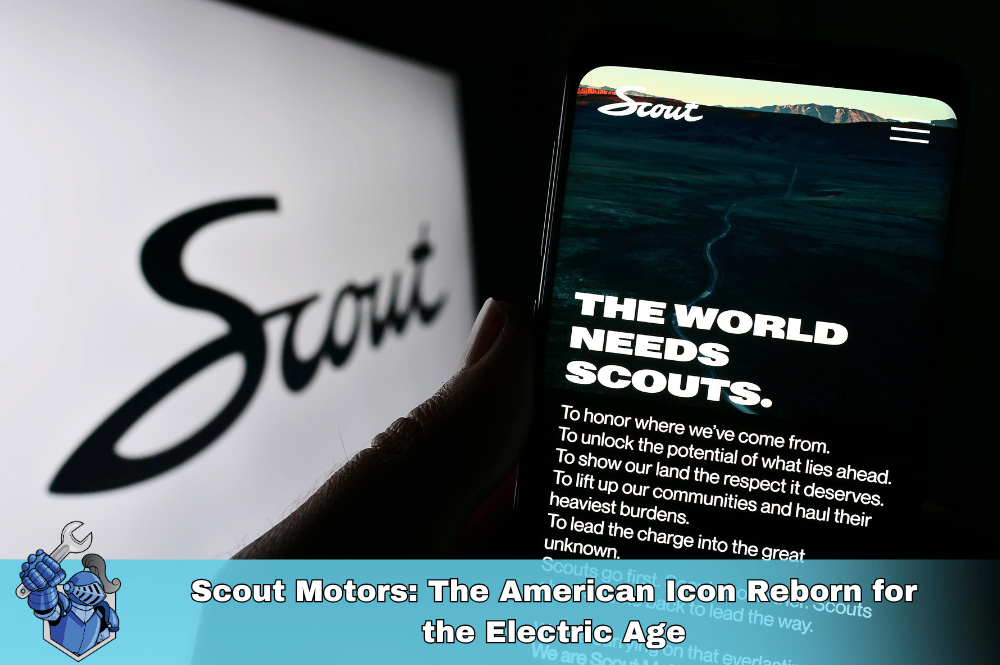 Scout Motors: The American Icon Reborn for the Electric Age
Scout Motors: The American Icon Reborn for the Electric Age How to Replace Wiper Blades: A Step-by-Step DIY Guide (Save Money & See Clearly!)
How to Replace Wiper Blades: A Step-by-Step DIY Guide (Save Money & See Clearly!) The 2025 Automotive Retirement Number: What Auto Pros Need to Save for a Comfortable Ride
The 2025 Automotive Retirement Number: What Auto Pros Need to Save for a Comfortable Ride The Ultimate Guide to Cheap Car Insurance: Find Your Lowest Rates in 2025
The Ultimate Guide to Cheap Car Insurance: Find Your Lowest Rates in 2025 Pre-Purchase Inspection (PPI): Your Essential Checklist Before Buying Any Used Car
Pre-Purchase Inspection (PPI): Your Essential Checklist Before Buying Any Used Car Unearthing Automotive Gold: The Underrated Used Cars You Need to Buy Now
Unearthing Automotive Gold: The Underrated Used Cars You Need to Buy Now The Last Ride: Why the 2025 Audi A4 is the Ultimate Collectible (and Daily Driver)
The Last Ride: Why the 2025 Audi A4 is the Ultimate Collectible (and Daily Driver) 2025 Corvette ZR1: The Ultimate Guide to Specs, Price, and Performance
2025 Corvette ZR1: The Ultimate Guide to Specs, Price, and Performance Does Driving for Uber/Lyft/DoorDash Void Your Car’s Warranty? & How to Get Covered
Does Driving for Uber/Lyft/DoorDash Void Your Car’s Warranty? & How to Get Covered Headlight Restoration & Bulb Replacement: The Ultimate Guide to Perfect Car Lighting
Headlight Restoration & Bulb Replacement: The Ultimate Guide to Perfect Car Lighting

